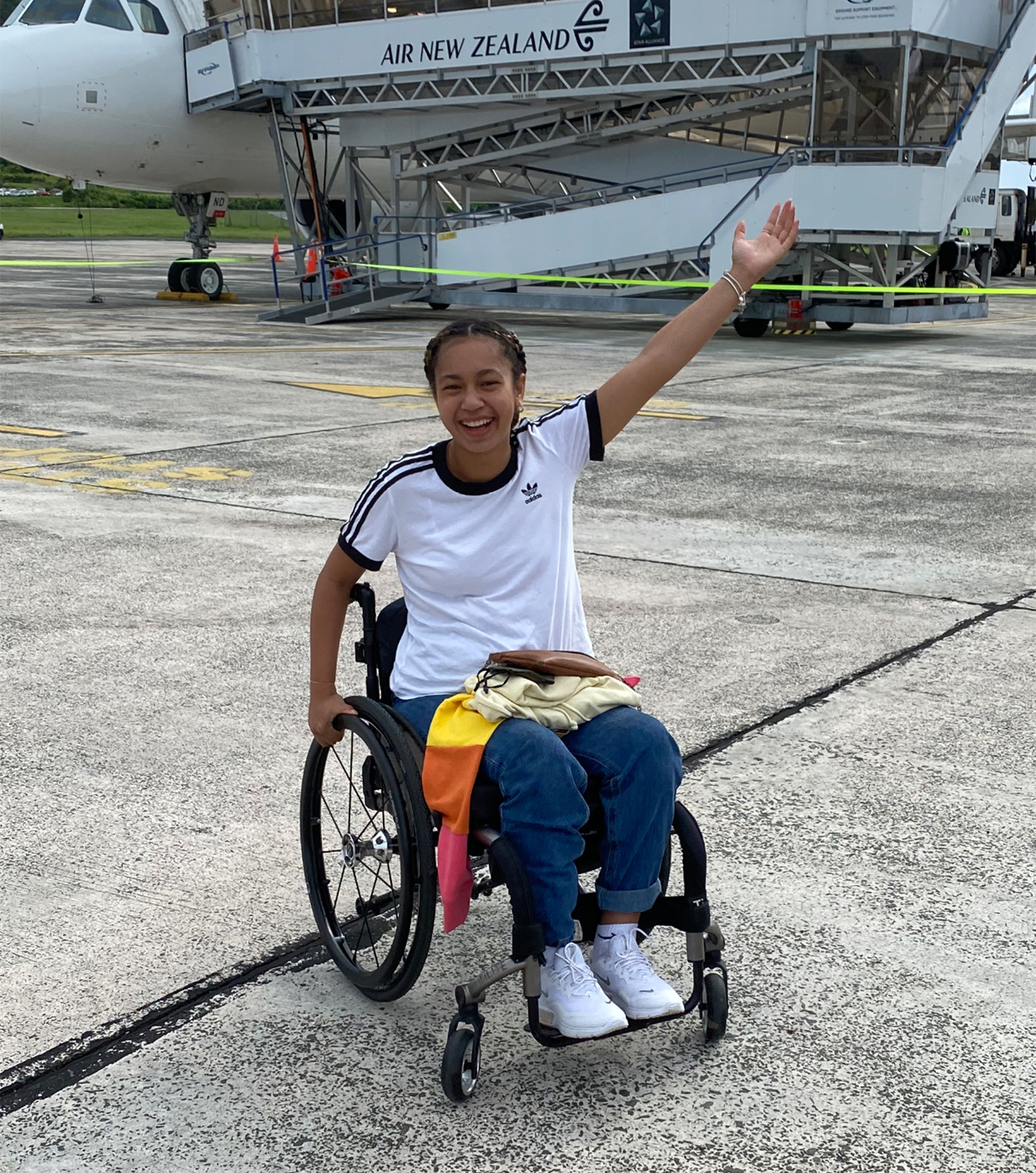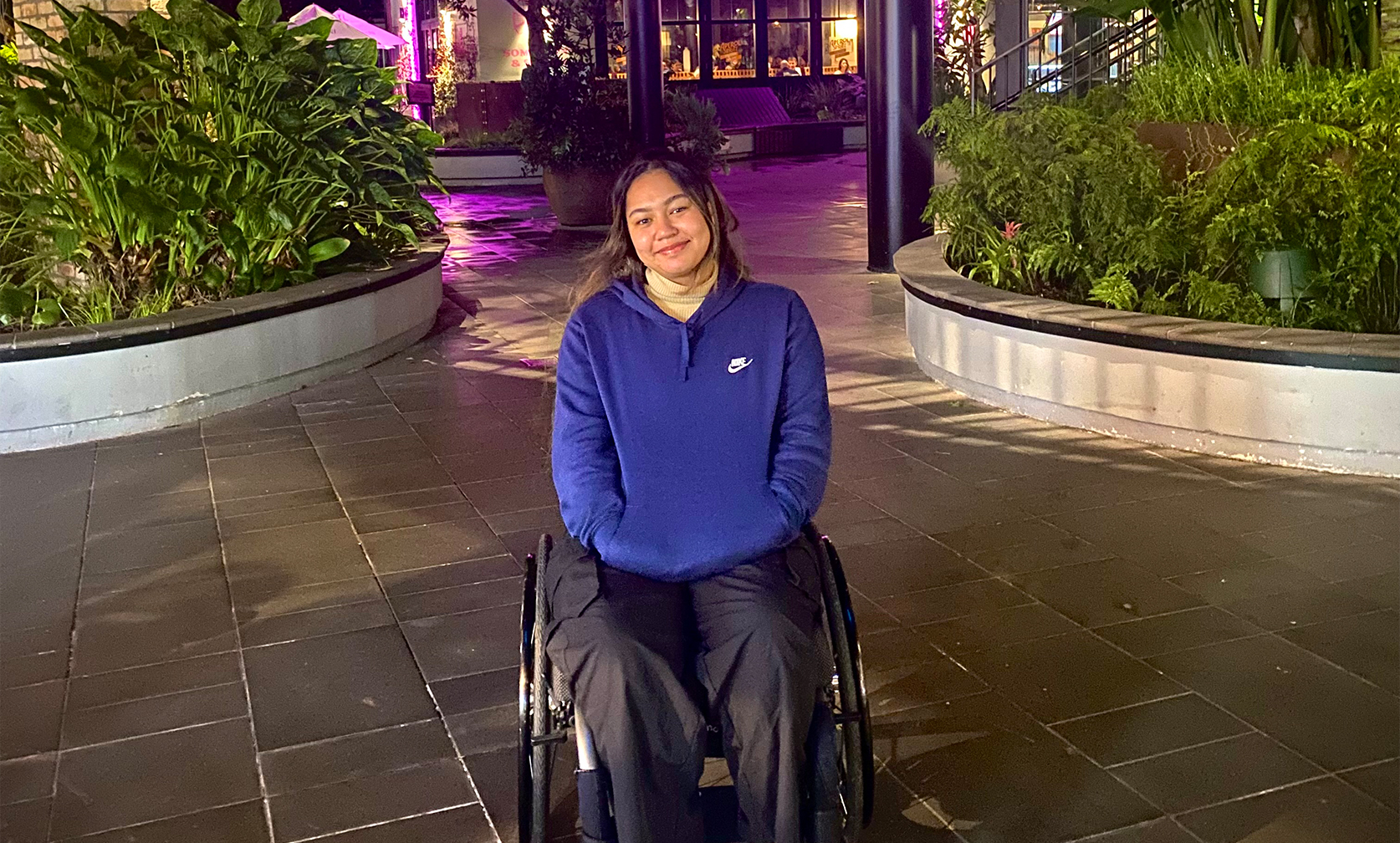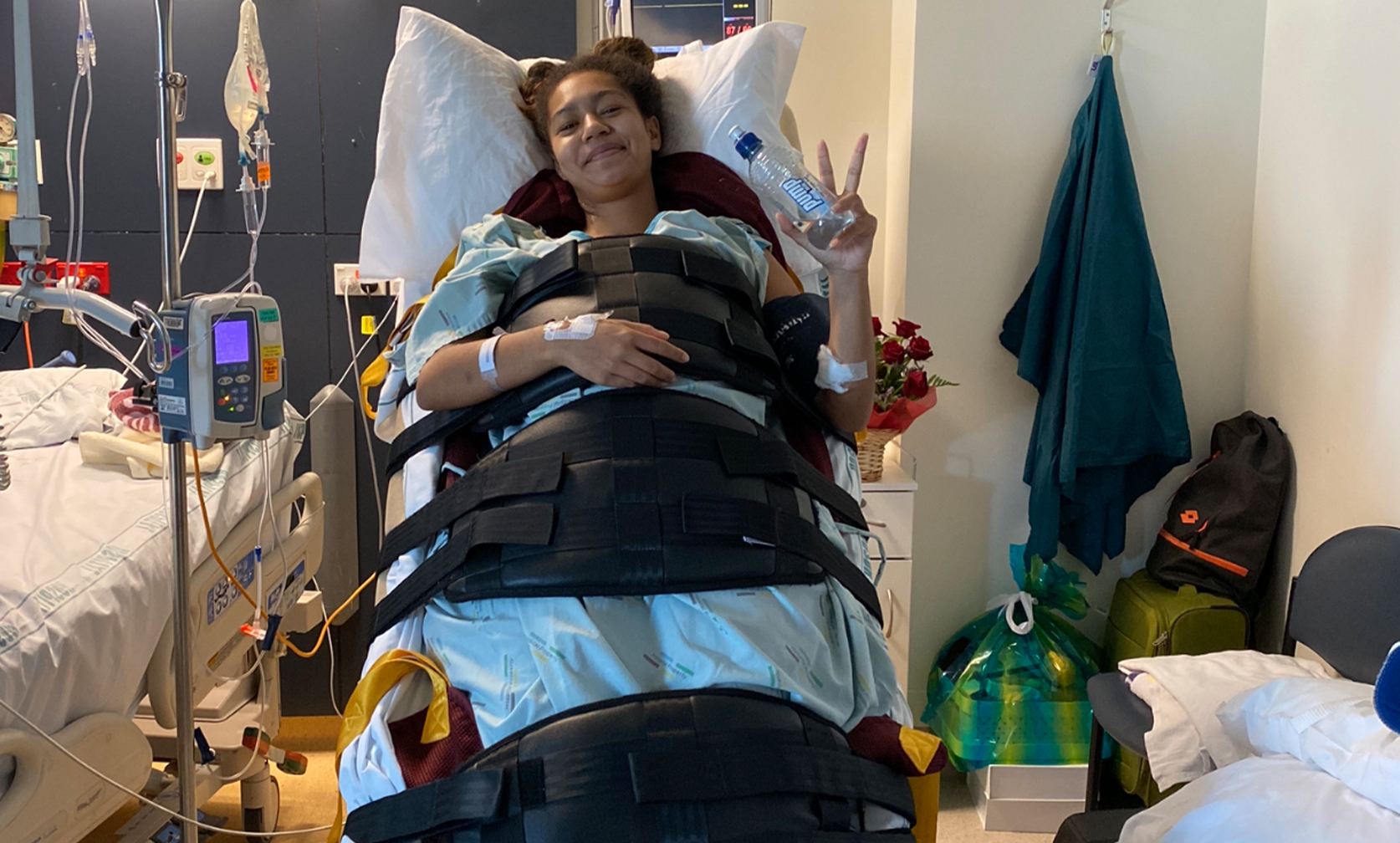From record-breaking athlete to resilient survivor.
Her parents and brother still live in the Cook Islands, while two sisters are in New Zealand and a younger brother is in Sydney. Moe’s family has always been close-knit and supportive, they’ve played a crucial role in her journey. 2019 was a transformative year for Moe with a move away from family to study at Auckland University. This also coincided with a busy time preparing for the 2019 South Pacific Games and the Oceania Football Under 19s Championships.
Moe’s life was failing into place until an unexpected turn of events during a visit home in 2020 changed everything. While visiting her family during a university break, Moe was involved in a single-vehicle accident late one night. Despite the clear weather, her car rolled over. Moe escaped without a single scratch on her body. However, she sustained a severe spinal cord injury (SCI) at T4 level.
With only one flight per week from Rarotonga to New Zealand, Moe had to wait until the following Friday to leave for NZ. There are no CT scan facilities on the island and the extent of the damage was not able to be confirmed. Moe spent the first week following the accident immobile in the small hospital. Despite the rudimentary facilities, the staff were all very caring.
Moe was accompanied by her parents on the flight to NZ and underwent surgery the following Monday at Middlemore Hospital. Once discharged, she spent two months at the Otara Spinal Unit, which proved to be a challenging experience. Although she wasn’t fully ready, Moe left early, eager to return home to Rarotonga.
In early December, Moe flew back to her family home, which had been modified to accommodate her needs, including the installation of a hospital bed. She stayed with her family until February 2021 before returning to New Zealand. Now, Moe lives with her sisters, who assist with transport and care. She has continued her studies at Auckland University, and commends them for the accessibility and support around campus.
During her initial rehabilitation, Moe worked tirelessly to learn new skills and adapt to her new reality. She continued her rehab upon returning to New Zealand, attending sessions with Rope Neura and Healthvision physios. Moe even had the opportunity to try an exo-skeleton, which she found fun and motivating.
Despite her injury, Moe remains passionate about sports, particularly those played with feet. She continues her avid support of her footballing family. With the recent formation of the Cook Islands Paralympics Committee, Moe is eager to become more engaged. She’d like to discover a sport she can enjoy and actively participate in, potentially aiming for the upcoming South Pacific Games in 2027.
Moe is now in her final year of study and completed her latest round of exams on the day she volunteered at the Luminary. She’ll soon be heading back to Rarotonga to fulfil the scholarship criteria that requires two years of service upon graduation. She has many options for her future career and is still deciding which area to focus on.

What would you like to be able to do most?
I would cherish the ability to play soccer again. Yet, beyond the capacity to walk or physically move, what matters most to me is the ability to physically feel things, even if it means I’ll be in a wheelchair forever. This function feels more crucial to me than any other. It would allow me to sense when I need to empty my bladder, when my stomach is upset, or when I’ve accidentally injured my toes or twisted my ankle. I yearn for that sensation. It would eliminate the uncertainty of whether my spasms indicate a problem I can’t feel or if my headache is just a typical migraine or a symptom of AD (Autonomic dysreflexia).
If I had to choose between regaining the ability to walk or the ability to feel again, I would choose the latter, although, of course, having both would be wonderful.

What would make the biggest difference to your everyday life right now and what is one of the challenges you face?
Before my injury, whenever I thought or heard about paraplegia, I simply equated it with the inability to walk, and even then, I thought, “That’s tough!” However, I’ve come to realize that’s not even the worst part.
Perhaps one of the most challenging aspects is the additional effort required to maintain my health now. I must constantly monitor everything I do – what I eat and how much I drink. Regular pressure relief is essential. Is my skin showing signs of a potential pressure sore? Are my feet swollen? Have I accidentally injured myself without realizing it? Did I use my standing frame today? Have I completed my daily stretches? It’s these little details that accumulate and make living with a spinal cord injury a little more demanding.
Over time, these tasks have become part of my daily routine, but there are still days when I think, “I wish I didn’t have to do all of this.” Without this added workload, life with a spinal cord injury would undoubtedly be much easier.
What does an SCI mean to you?
I’ve always been one to challenge myself, and my spinal cord injury has been my greatest challenge yet.
It’s experiencing the thrill of accomplishment only to be set back by something minor. It’s almost like finishing a race only to find out you’ve got one more lap. The only option is to keep moving forward.

How do you get through a hard day?
On difficult days, I prefer to stay in bed and watch a movie or read. Being in the comfort of my home and bed makes me feel much better. It’s a chance to relax and clear my mind. I also remind myself of how far I’ve come and how fortunate I am, staying grateful for what I have, knowing that things could be worse.
What would you like to say to CatWalk supporters?
The smallest donation could make the biggest difference in someone’s life. Finding a cure won’t only affect the millions of people who are currently living with SCI but also the families and loved ones of people with SCIs. It’s not just our lives that are affected but also those around us, so a cure would really help so many people. It would also help the millions of people who are yet to come through this journey.
So, a donation would take us that one step closer to helping millions of people.
Who would you like to thank?
I want to express my heartfelt gratitude to my family for their incredible sacrifices and unwavering support. So much changed after my injury, and their presence made the transition smoother and more manageable. I also want to thank my friends, physiotherapists, occupational therapists, rehab coaches, and everyone who has been a part of my journey. I wouldn’t be where I’m at now without you all.
A special thanks to everyone working diligently to find a cure. You’re the best, and your efforts are truly appreciated!
